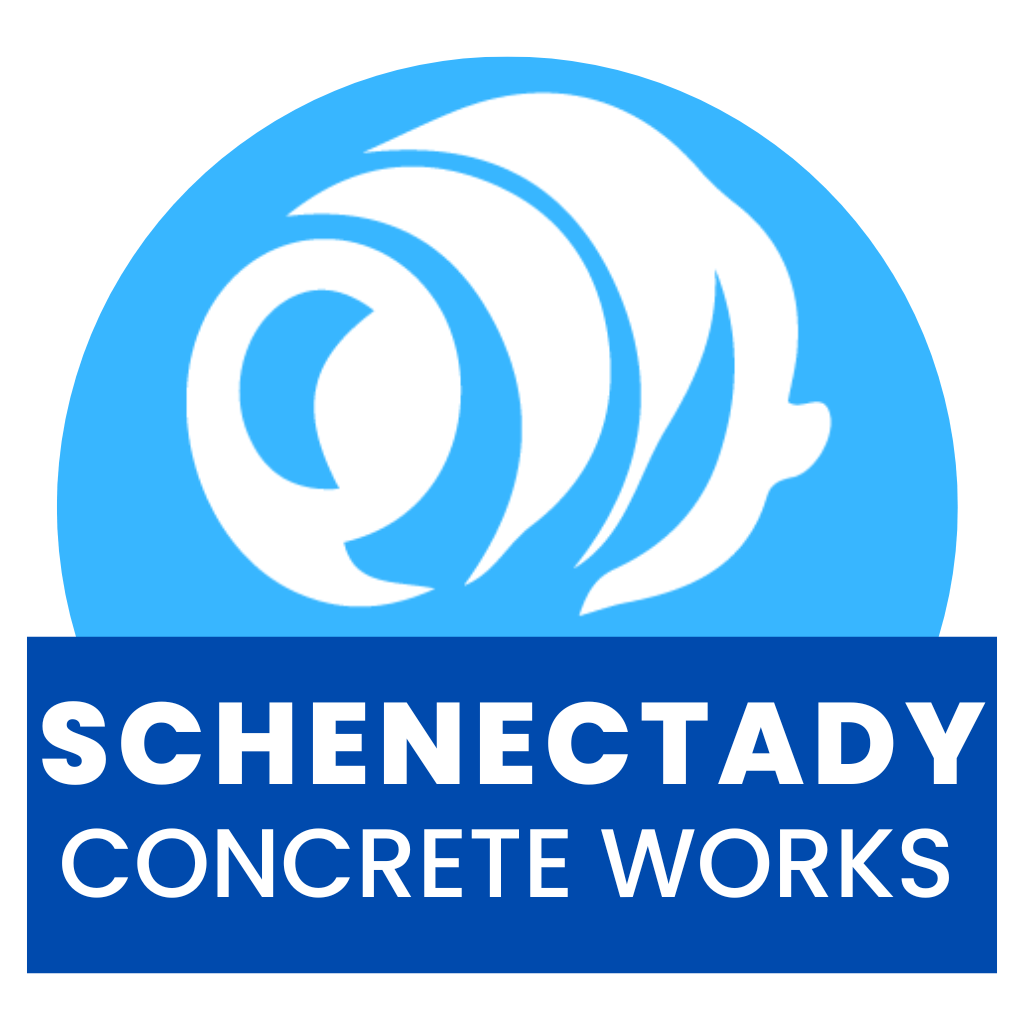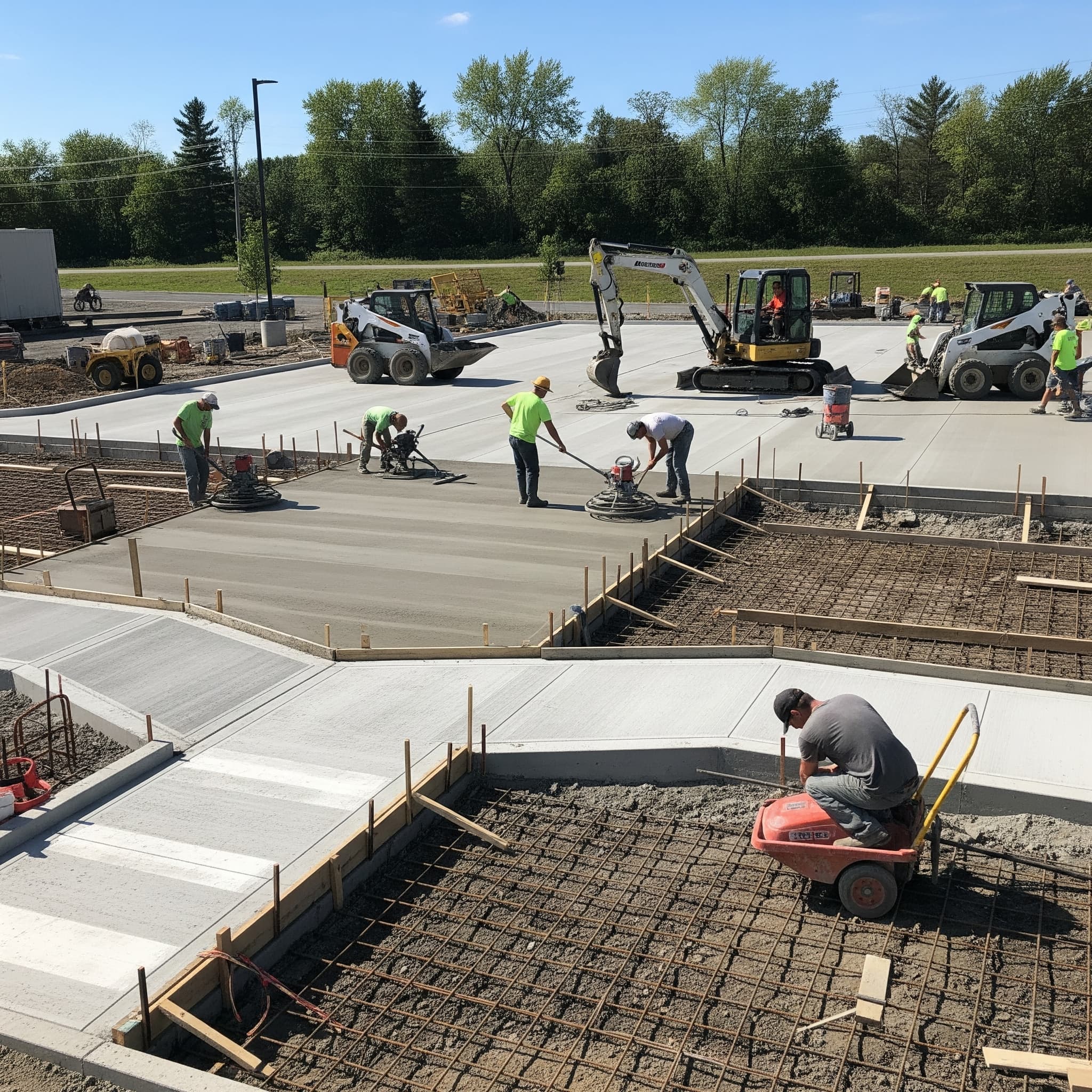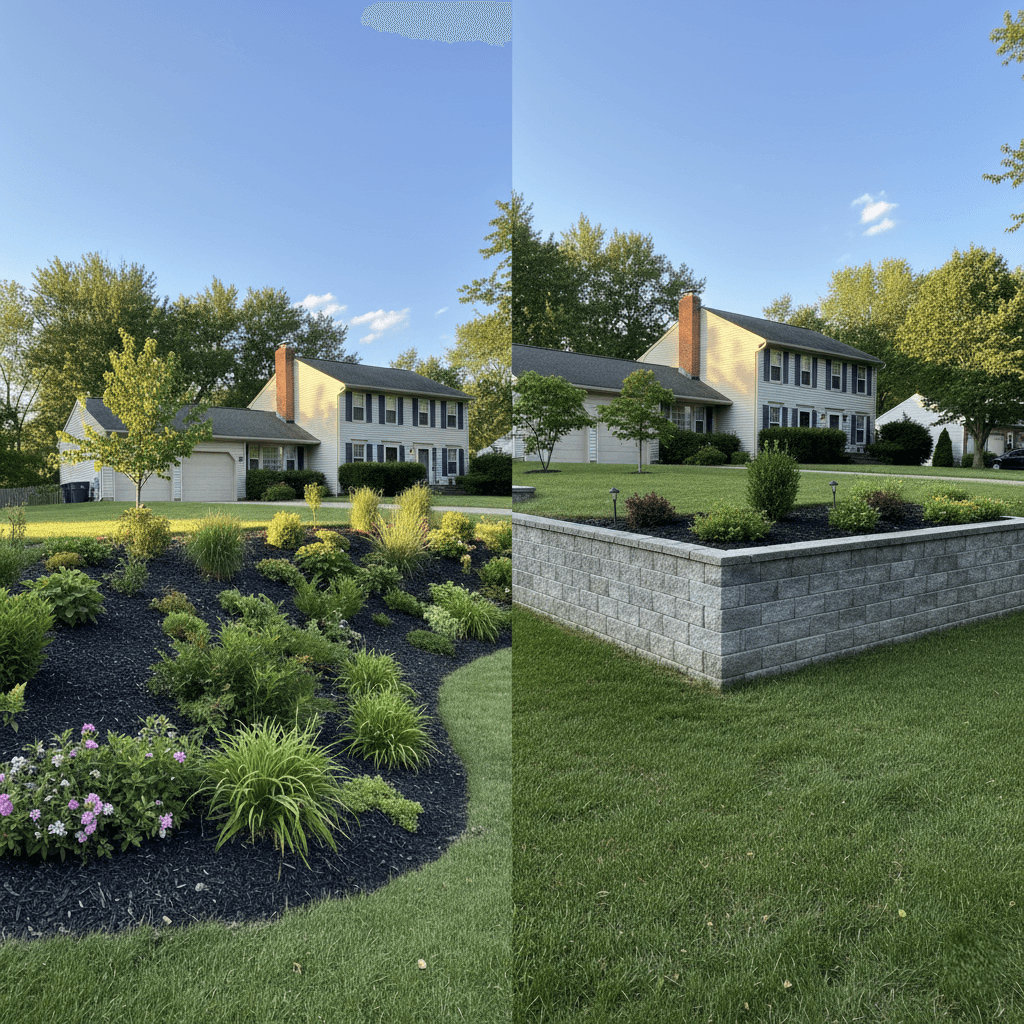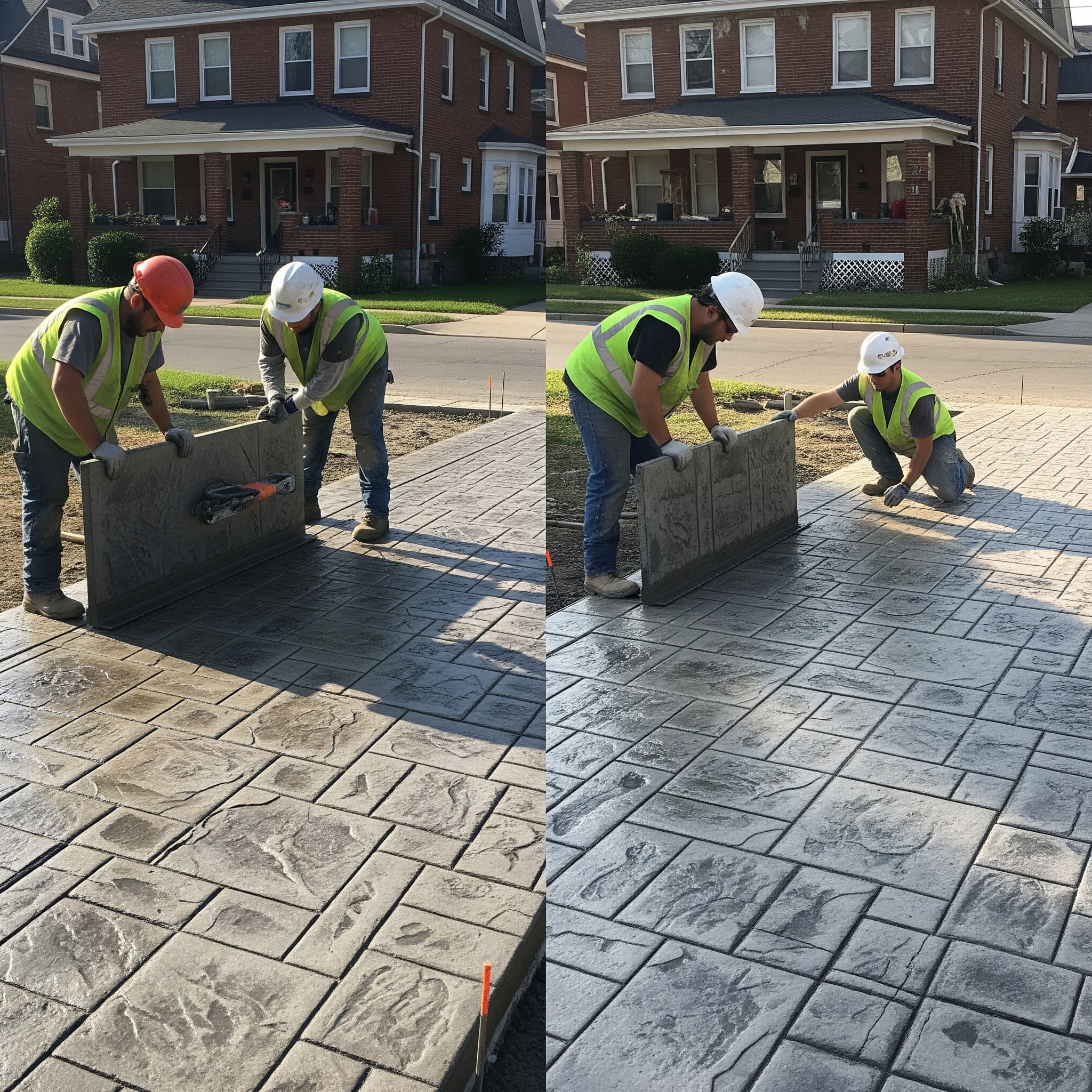
How to Design a Concrete Walkway for Schenectady Winters
Concrete Walkway Schenectady
Designing a concrete walkway that withstands Schenectady’s harsh winter conditions requires careful planning and specialized construction techniques. The Capital Region experiences severe freeze-thaw cycles, heavy snowfall, and temperature fluctuations that can destroy improperly designed concrete surfaces. Properties near the Union College campus face additional challenges from heavy foot traffic and deicing chemical exposure that accelerate deterioration. Understanding local climate conditions and soil characteristics ensures walkway installations that provide safe passage throughout the winter months. Professional design approaches incorporate proper drainage, freeze-thaw resistance, and durable materials that maintain both functionality and appearance despite challenging weather conditions.
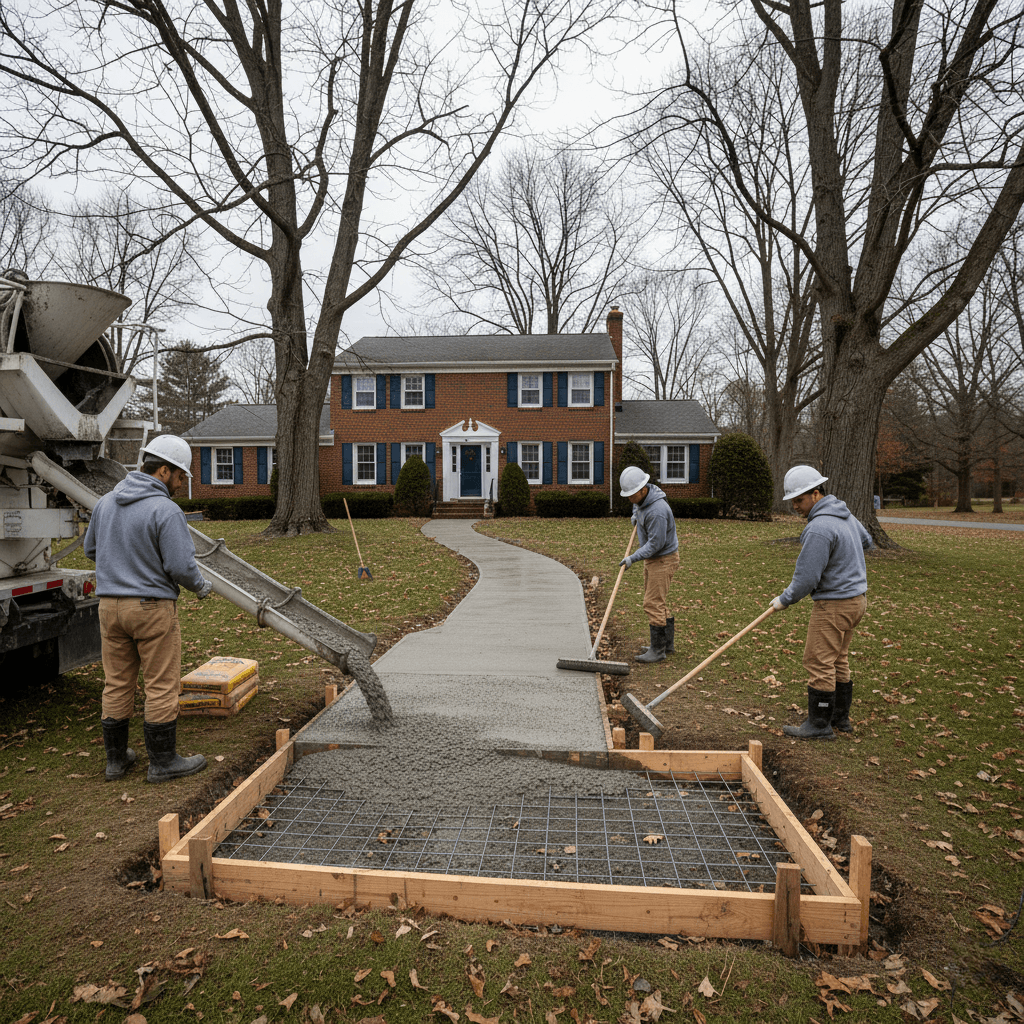
Climate Considerations for Schenectady Walkways
Schenectady’s winter temperatures regularly fluctuate above and below freezing, creating repeated freeze-thaw cycles that stress concrete surfaces. Average winter lows reach 15°F while daily highs often exceed 32°F, causing water trapped in concrete pores to expand and contract continuously. This cycle generates internal pressure that leads to scaling, spalling, and structural deterioration over time.
Annual snowfall averages 60 inches throughout the region, with individual storms depositing significant accumulations that require removal and deicing treatments. Properties near Central Park’s elevated areas experience greater snow accumulation and longer-lasting ice conditions that demand enhanced walkway durability and traction features.
Freeze-Thaw Damage Prevention
Air-entrained concrete provides essential freeze-thaw resistance by incorporating microscopic air bubbles that accommodate ice expansion without damaging the concrete matrix. Properly entrained concrete contains 6.5 percent air content that creates pressure relief spaces throughout the material. This specification proves crucial for exterior walkways exposed to moisture and temperature cycles.
Minimum compressive strength of 4,000 PSI ensures adequate durability for exterior flatwork subjected to freeze-thaw conditions. Higher-strength concrete contains lower water-cement ratios that reduce permeability and limit water infiltration. Dense, well-cured concrete resists moisture penetration that causes internal damage during freezing periods.
Proper Drainage Design
Concrete walkway slope requirements mandate a minimum 1/4-inch drop per foot of length to ensure positive drainage away from structures. Walkways parallel to buildings require a cross-slope of 1 inch per 5 feet to direct water toward drainage areas. Proper slope prevents standing water that creates slip hazards and accelerates concrete deterioration through repeated freeze-thaw exposure.
Properties near the historic Stockade District often require enhanced drainage design due to dense development and limited runoff areas. Careful slope calculations ensure water flows toward appropriate collection points without creating ice dams or flooding conditions during spring thaws.
Surface Water Management
Integrated drainage systems, including catch basins, channel drains, and proper grading, prevent water accumulation on walkway surfaces. Strategic placement of drainage elements accommodates both routine precipitation and rapid snowmelt that characterizes upstate New York spring conditions. Adequate drainage capacity handles peak flow rates during storm events and thaw periods.
Permeable base materials beneath concrete walkways provide additional drainage while preventing frost heaving from groundwater. Properly compacted aggregate bases with adequate thickness distribute loads while maintaining stable support during freeze-thaw cycles common throughout the Capital Region.
Material Selection and Mix Design
High-quality concrete mixes incorporating supplementary cementitious materials enhance durability and reduce permeability. Fly ash or silica fume additions improve long-term performance while reducing bleeding and segregation during placement. These materials create denser concrete matrices that better resist moisture infiltration and chemical attack from deicing salts.
The maximum water-cement ratio of 0.45 provides an optimal balance between workability and durability for exterior walkway applications. Lower water content reduces permeability while maintaining adequate strength development and finishing characteristics. Proper mix design includes water-reducing admixtures that achieve the desired consistency without compromising performance.
Aggregate Selection for Winter Conditions
Local aggregates with proven freeze-thaw durability provide long-term performance in upstate New York conditions. Well-graded stone with minimal absorption reduces internal stress during freeze-thaw cycles. Quality aggregate sources throughout the region supply materials tested for durability and chemical resistance.
Proper aggregate gradation ensures dense concrete that minimizes voids and reduces permeability. Gap-graded mixes should be avoided as they create weak zones susceptible to freeze-thaw damage. Continuous gradations provide optimal particle packing that enhances both strength and durability characteristics.
Thickness and Reinforcement Requirements
Minimum concrete walkway thickness of 4 inches provides adequate structural capacity for pedestrian loads while accommodating freeze-thaw stresses. Properties with heavy pedestrian traffic near Proctors Theatre may require a 5-inch thickness for enhanced durability and longer service life. Increased thickness provides additional thermal mass that moderates temperature fluctuations.
Wire mesh reinforcement or discrete steel rebar helps control cracking from thermal stresses and minor settlement. Reinforcement should be positioned at the mid-depth of the slab to provide optimal crack control benefits. Proper concrete cover protects steel from corrosion while maintaining structural effectiveness throughout the walkway’s service life.
Joint Design and Spacing
Control joints at 5-foot maximum spacing accommodate thermal movement while controlling crack location and width. Joints should extend at least 25 percent of the slab thickness to effectively control cracking. Proper joint timing during concrete finishing prevents random cracking while ensuring clean, straight joint lines.
Expansion joints at building interfaces and every 20 to 30 feet along the walkway length accommodate seasonal movement and prevent damage to adjacent structures. Quality joint sealers protect against water infiltration while maintaining flexibility throughout temperature cycles. Regular joint maintenance prevents deterioration that compromises walkway performance.
Joint Sealing and Maintenance
High-quality polyurethane sealers provide long-term protection against moisture infiltration and debris accumulation. Sealers must accommodate joint movement while maintaining waterproof barriers throughout seasonal temperature changes. Professional installation ensures proper adhesion and performance of joint sealing systems.
Annual joint inspection and resealing prevent water infiltration that leads to freeze-thaw damage and undermining of walkway support. Properties near Jackson’s Garden area require particular attention due to organic debris that can compromise joint sealer effectiveness and promote moisture retention.
Surface Texturing for Winter Safety
Broom-finished surfaces provide essential traction for winter pedestrian safety while maintaining an attractive appearance. Medium-texture broom finishes offer an optimal balance between slip resistance and ease of snow removal. Excessive texture can trap debris and complicate maintenance, while smooth surfaces become dangerously slippery when wet or icy.
Consistent surface texture across the entire walkway ensures uniform traction characteristics and a professional appearance. Proper timing of finishing operations produces a uniform texture that maintains effectiveness throughout the walkway’s service life. Quality finishing work enhances both the safety and aesthetic appeal of completed installations.
Installation Timing and Weather Protection
Concrete walkway installation should occur when temperatures remain above 40°F for at least 72 hours to ensure proper curing and strength development. Cold-weather installations require heating of materials and protection of fresh concrete using insulating blankets or enclosures. Spring and fall provide optimal installation conditions in the Capital Region.
Protection from freezing during the first 72 hours proves critical for long-term durability and performance. Concrete that freezes before achieving adequate strength suffers permanent damage that compromises structural integrity and appearance. Professional contractors monitor weather forecasts and adjust schedules to avoid problematic installation conditions.
Long-term Maintenance Considerations
Annual sealing with penetrating concrete sealers protects against moisture infiltration and chemical attack from deicing salts. Quality sealers reduce scaling and spalling while maintaining a natural concrete appearance. Proper sealer selection considers both performance requirements and aesthetic preferences for each specific application.
Prompt repair of minor cracks prevents moisture infiltration that leads to freeze-thaw damage and progressive deterioration. A professional assessment of walkway condition identifies developing problems before they require major repairs. Preventive maintenance extends walkway service life while maintaining safety and appearance standards.
Accessibility and Code Compliance
ADA-compliant walkway design ensures safe access for all users while meeting regulatory requirements for public and commercial properties. Maximum slopes of 1:20 (5 percent) maintain accessibility while providing adequate drainage for winter conditions. Proper cross-slopes and surface textures accommodate mobility devices while preventing water accumulation.
Properties near the Municipal Golf Course area and other public facilities require enhanced accessibility features that function effectively throughout winter conditions. Strategic design incorporates heating elements or enhanced drainage to maintain usable access during challenging weather periods.
Schenectady Concrete Works specializes in winter-resilient concrete walkway design and construction throughout the greater Capital Region. Our experienced team understands local climate challenges and provides comprehensive solutions that ensure safe, durable pedestrian access in all weather conditions while maintaining attractive appearances that enhance your property value.
